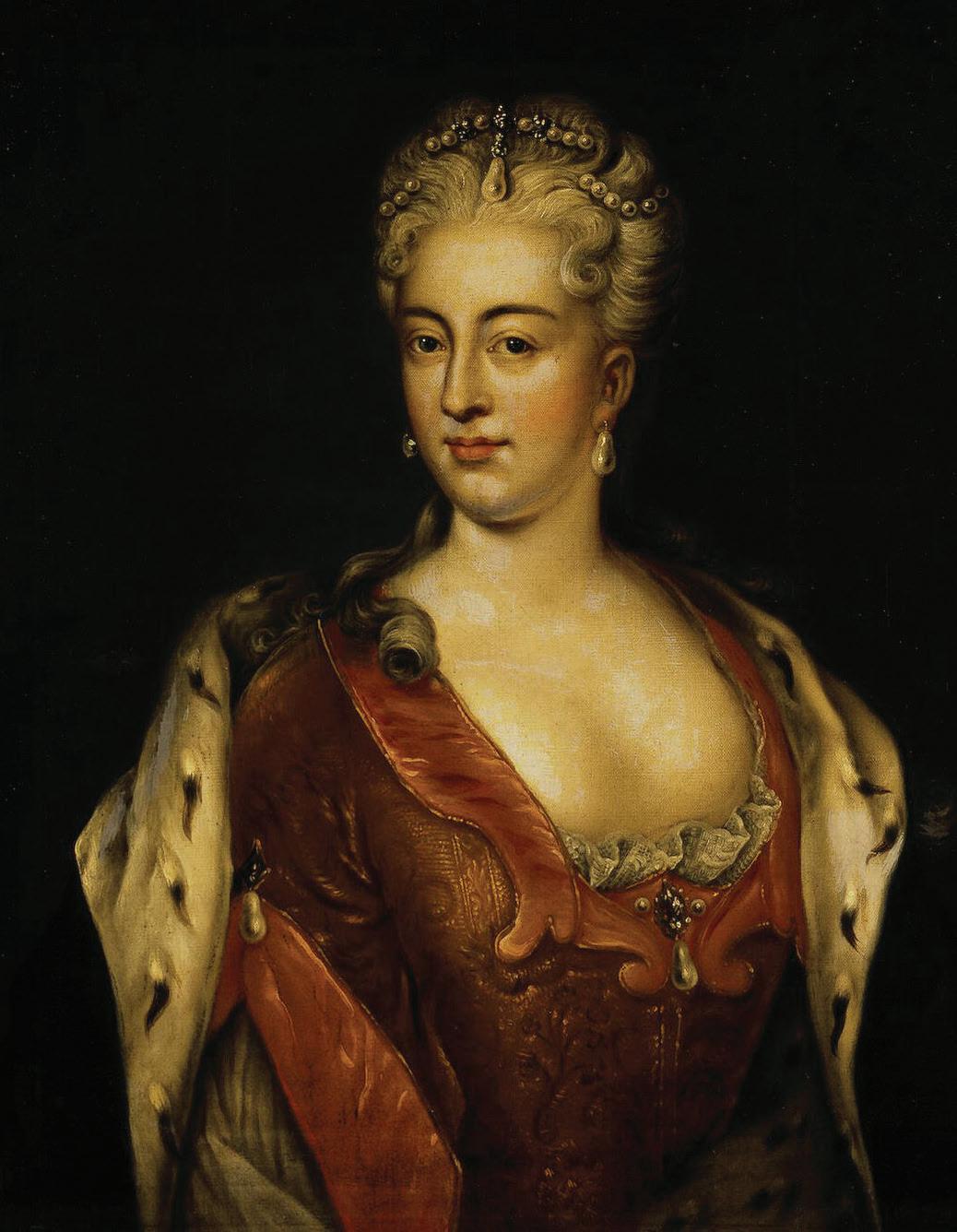
5 minute read
LEGENDS
Did an adventurer impersonating a dead Russian princess really live in French Mobile?
Advertisement
text by JOHN S. SLEDGE
According to the romancers, she arrived at Dauphin Island in the spring of 1721 aboard a pest ship loaded with German immigrants. French Louisiana was then under the administration of the Scottish gambler, banker and speculator John Law, who was sending over hundreds of German and Swiss farmers in an attempt to bolster Louisiana’s small European population. Most of these newcomers settled above New Orleans on a stretch of the Mississippi River subsequently known as the German Coast. But one young woman chose to live in Mobile. She was, in the words of the mid 20th-century local historian Caldwell Delaney, “not of the common herd.” She carried herself like a lady, owned expensive jewelry and bought a little cottage, and in her social interactions, manifested a “noble sorrow.”
Attractive, unattached European women were scarce in early 18th-century Mobile, and the officers at Fort Condé showered her with attention. Chevalier d’Aubant was especially smitten and was convinced he had seen this lady somewhere before during his peripatetic services. He visited her often at her little plastered, half-timber cottage with the bark roof, and she gradually took him into her confidence. She was really, she asserted, Princess Charlotte Christina Sophia of Brunswick-Wolfenbüttel, the wife of Tsarevich Alexis Petroviche, Peter the Great’s son! The credulous d’Aubant read-

Left Tsarevich Alexis Petrovich, son of Peter the Great. PORTRAIT BY JOHANN GOTTFRIED TANNAUER Right The real Charlotte Christina Sophia of Brunswick-Wolfenbüttel, as depicted in a 1720s
portrait. ARTIST UNKNOWN
ily accepted this, for he had once glimpsed Princess Charlotte in St. Petersburg, and this young lady certainly bore a striking resemblance.
But how, he begged to know, had she come to be in provincial Mobile, perched on the edge of a howling wilderness? Her story was heartrending. Betrothed to the tsarevich when only in her teens, she discovered him to be an abusive, alcoholic brute. Life with him was unbearable, including his drunken rages and his habit of parading his lovers. To make matters worse, she had been isolated and lonely, shunned by the court, a stranger in a strange land. Only her father-in-law the tsar had been kind to her.
Soon, d’Aubant and Charlotte became lovers, and neither was shy about sharing her fantastic identity. d’Aubant’s fellow officers were experienced, informed and well-traveled men who, though interested in this improbable newcomer, were not in love with her. They were happy to indulge d’Aubant his little adventure but less likely to believe his paramour was a Rus-


sian princess. Several were quick to point out that the tsarevich’s wife had in fact died in 1715 after falling down some stairs and then giving birth to her second child.
This intelligence did not trouble the chevalier since his lover had a ready explanation. She had faked her death, she claimed, and enlisted a few ladies-in-waiting to assist in tricking the tsarevich and tsar. As a last request, she had entreated the tsar not to have her embalmed. He agreed but still gave a grand funeral complete with horses, carriages, soldiers, clergy and all the rest. Shortly afterward, her devoted servants broke open the royal tomb and released her. After much intrigue, she managed to escape to distant Louisiana, where she was at last free of her evil husband and his many spies.
Doubtless there were many in tiny Mobile who considered the tale nothing more than an elaborate fiction, but d’Aubant was not one of them. As the story goes, he and Charlotte married and had a daughter. When he assumed command at Fort Toulouse, near present-day Montgomery, Charlotte followed him, and they lived, in Delaney’s words, “in a cabin within the fort, while Indians prowled the forests surrounding the stockade. It was a far cry from the Imperial Palace of St. Petersburg, but it was happiness and content.”
D’Aubant’s service soon took them to France, and he died there in 1754. Charlotte lived as a wealthy widow. But one day, the Count of Saxony saw her at the Tuileries and proclaimed her a fraud. Rather than the Princess Charlotte Christina Sophia, she had been a mere wardrobe mistress who had been in the royal Russian household. After the princess’ untimely death, this opportunistic servant girl filched some jewelry and took advantage of her resemblance to Charlotte to pass herself off as royalty. Her acting skills and ready explanations that had so easily worked in colonial Louisiana were quickly exposed in aristocratic Paris, and she subsequently died in poverty.
This story, the first version of which began circulating in Europe around 1760, thoroughly charmed 19th-century American regional historians like François Xavier Martin,

Above The real Princess Charlotte lies next to her husband, the Tsarevich Alexis, in the Cathedral of Peter and Paul in St. Petersburg, Russia.
PHOTO COURTESY LIBRARY OF CONGRESS
Charles Gayarré and Albert James Pickett, who embellished it in their books. Later romantically inclined writers eagerly repeated it well into the 20th century. Delaney devoted an entire chapter to the episode in his elegiac “Remember Mobile” (1948). Others were appropriately skeptical, none more so than Peter Joseph Hamilton, who in his monumental “Colonial Mobile” (1897), claimed that according to church records, d’Aubant’s wife was Louise Marguerite Bernoudy, a local woman of respectable family who “can hardly pose for a Russian princess.” Nor, it would seem, a fast-talking fraudster arrived on a pest ship.
Is it all just lies then? No Mobile princess, no devoted colonial lover, no deceiving wardrobe attendant? Let us adopt a gentler response. It is an old legend with 18th-century European roots, one of many colorful stories that give Mobile its exotic character, redolent of humidity, moss, cast iron and romance. That, at least, is very real, indeed. MB
John S. Sledge is the author of the “Gulf of Mexico: A Maritime History.”












